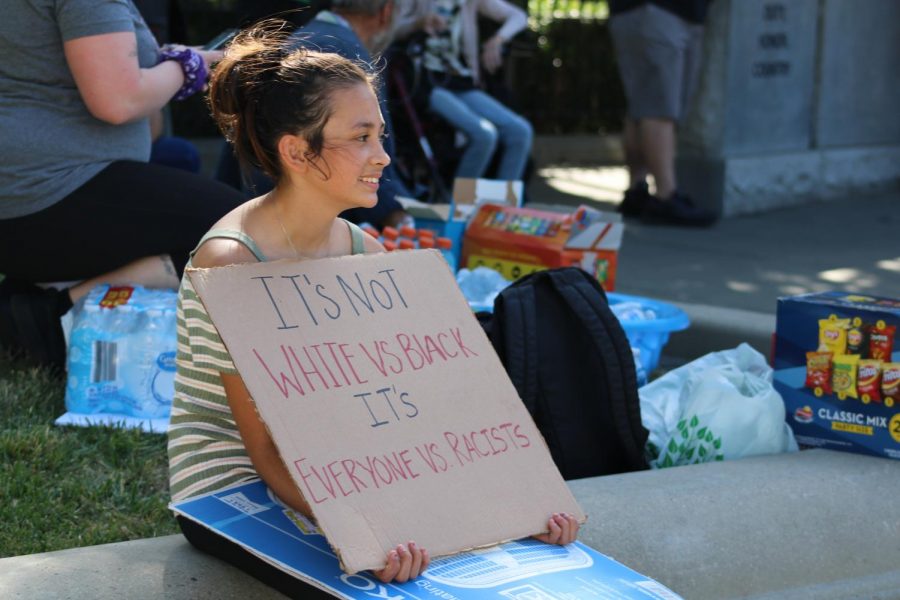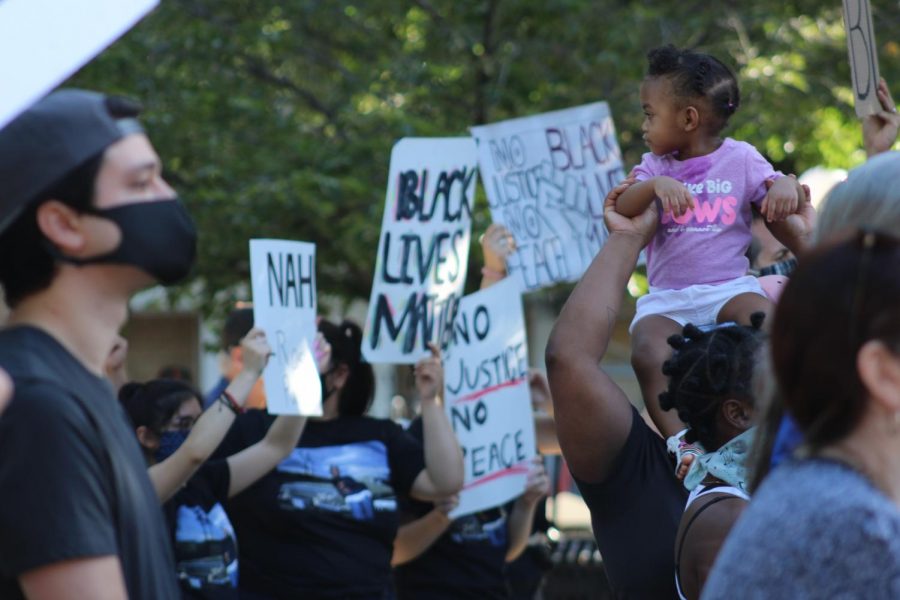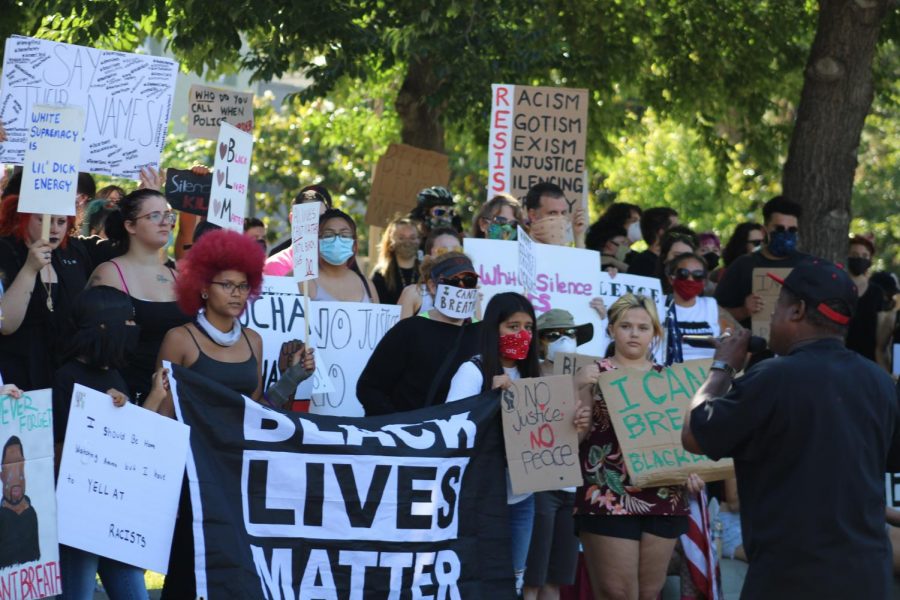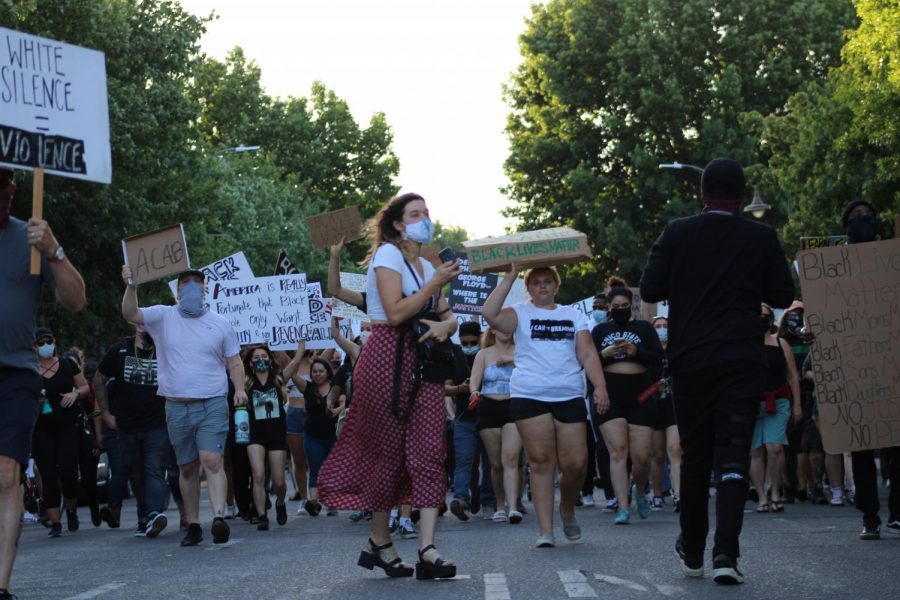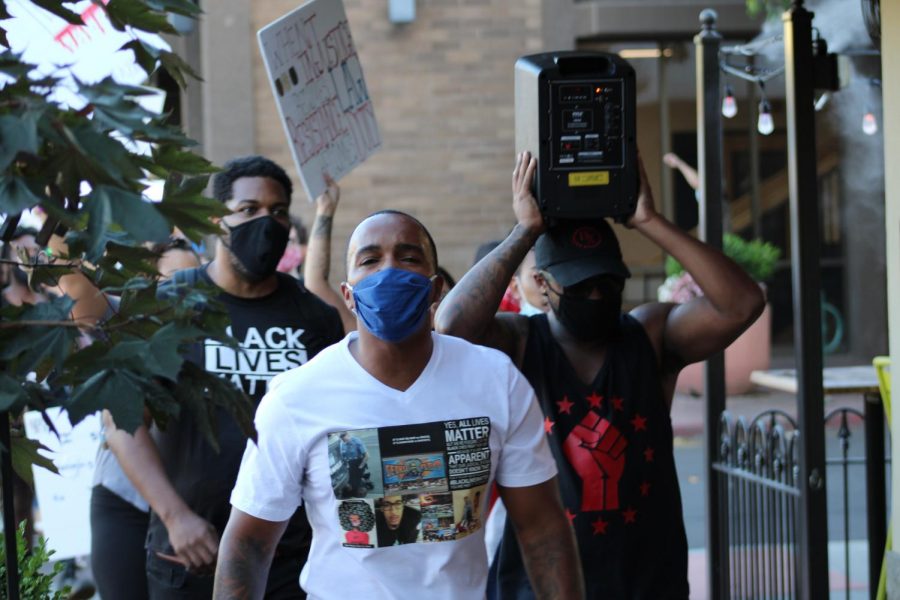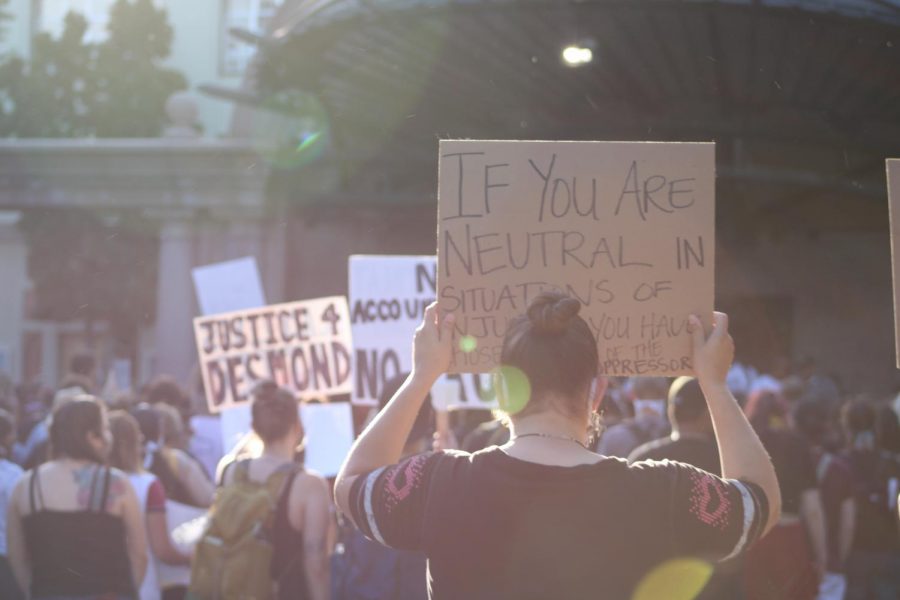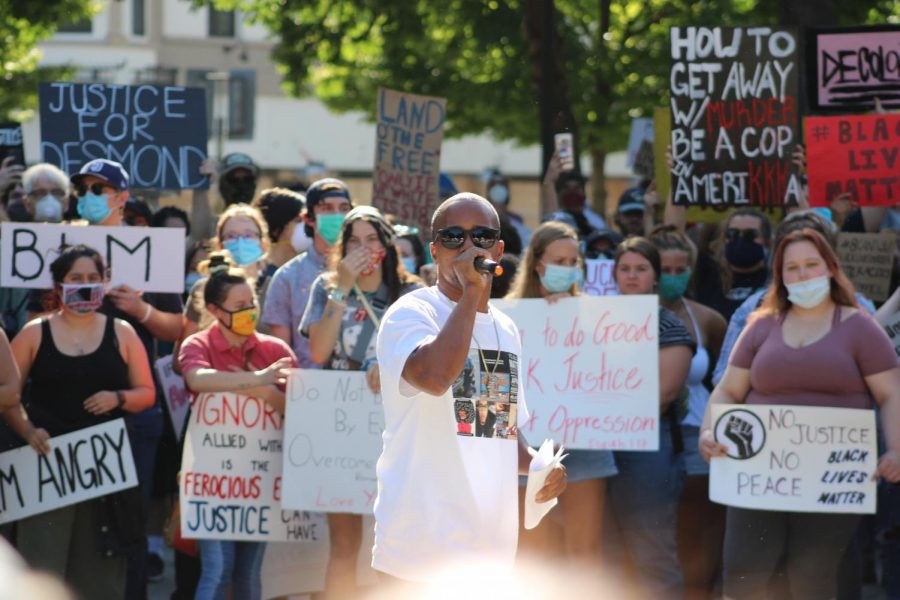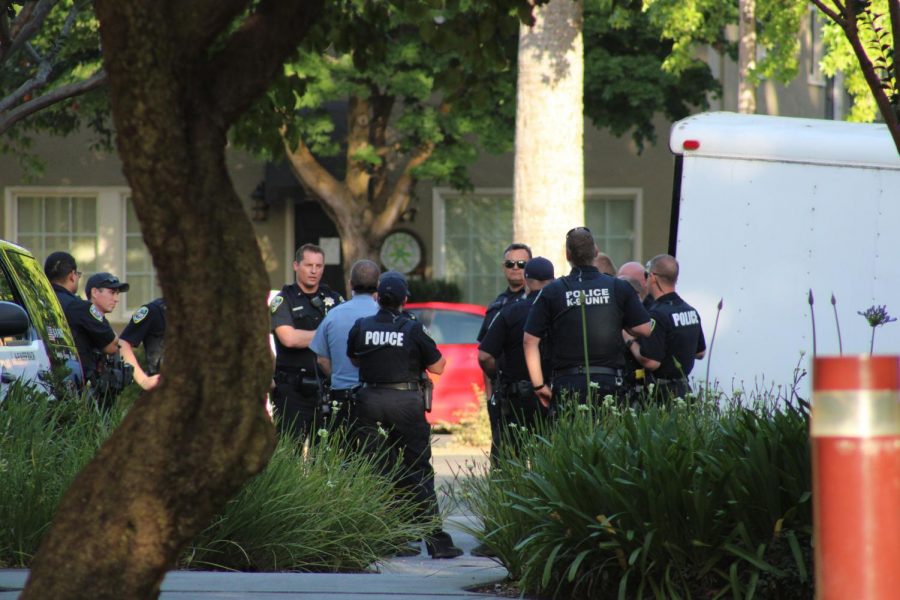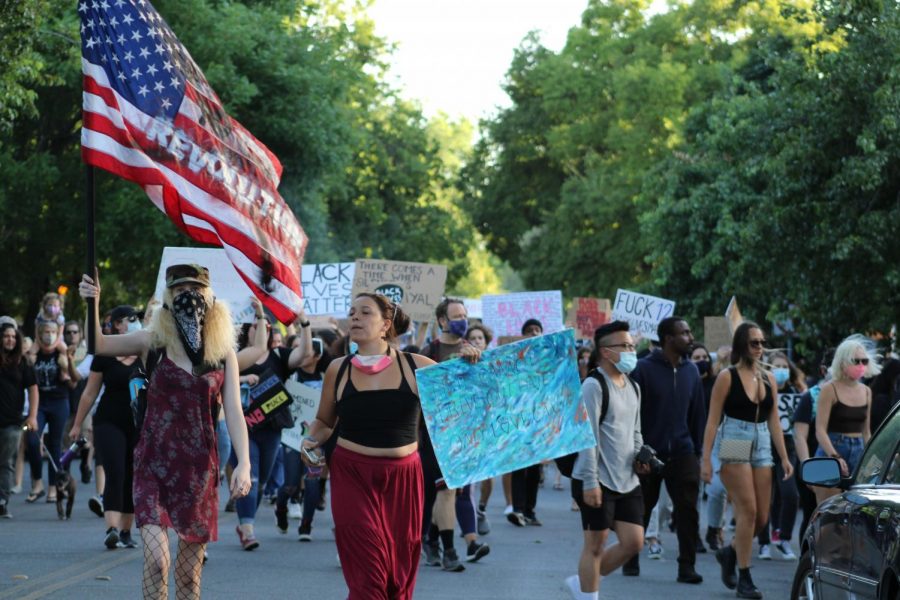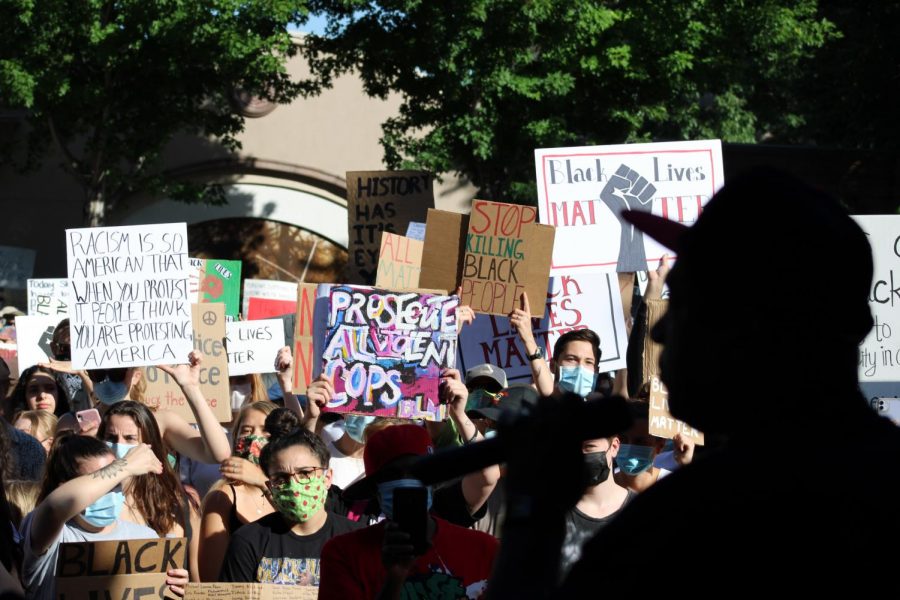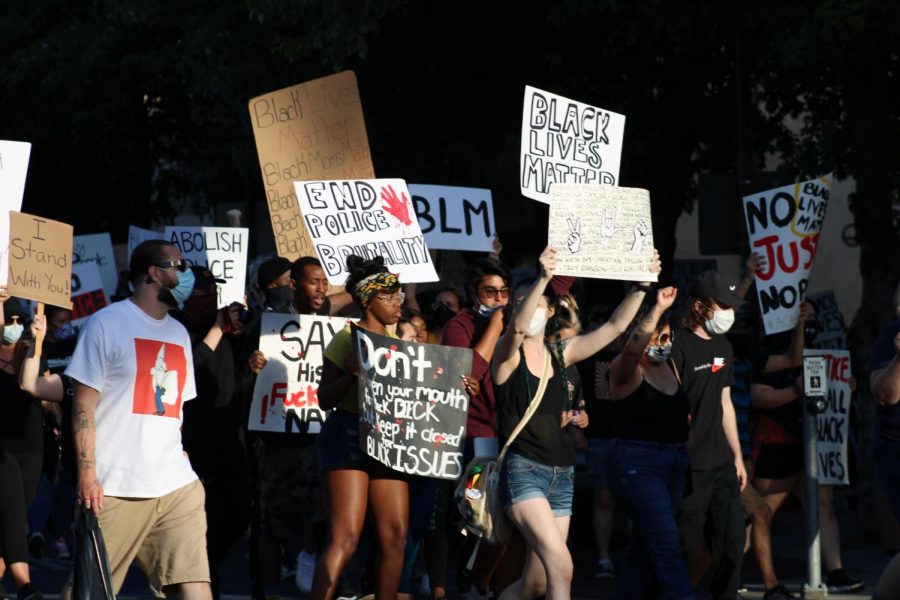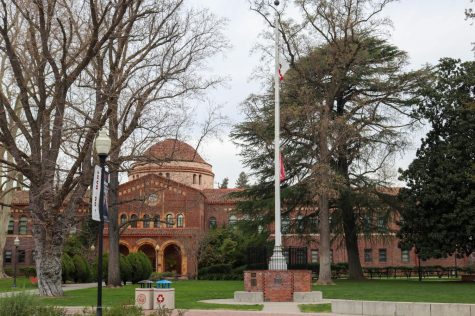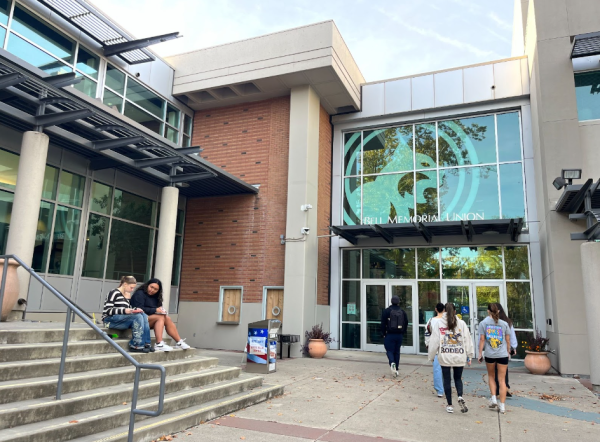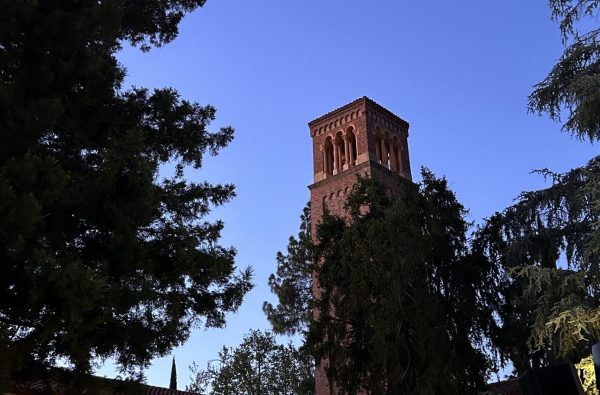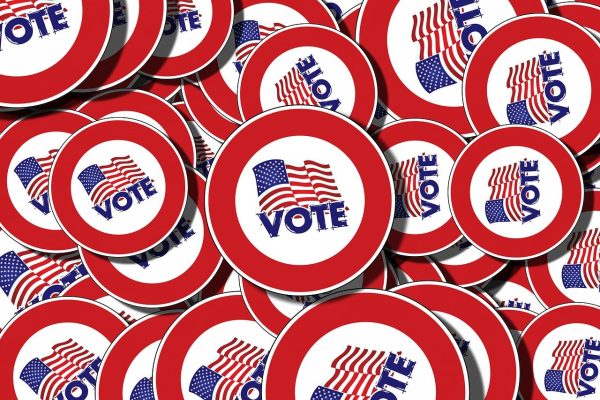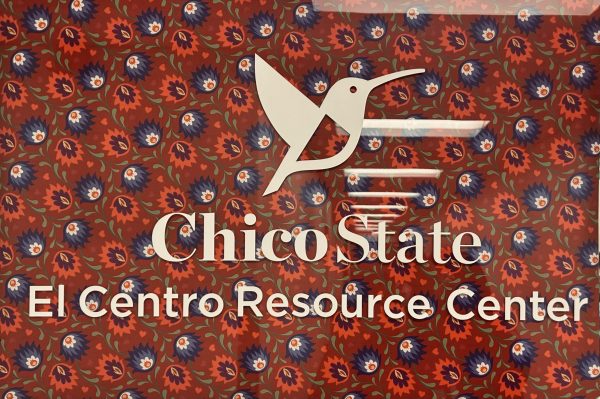Reflection: An Orion reporter’s experience covering Chico’s largest BLM protest
WARNING: This article contains a reference to a racist slur and may be inappropriate for children.
Hundreds of people marched into Chico City Plaza on June 5 demanding justice for George Floyd, Breonna Taylor and Chico’s Desmond Phillips, who in 2017 was shot and killed by Chico police in his home while experiencing a mental health crisis.
People from all ethnicities, backgrounds and ages gathered to raise awareness about police brutality and the Black Lives Matter movement. Most protestors wore masks in an effort to reduce the spread of COVID-19 while carrying signs painted with the names of other black people killed by police.
Pastor at Rhema Word of Faith Ministries Vince Haynie organized the event to speak out against racism. His goal was to mobilize the church and speak against injustices. He invited leaders like Chico Mayor Ann Schwab to speak out.
Haynie expressed concern about a safer future for his grandchildren but seeing individuals in Chico and protestors around the country advocate for black lives made him hopeful.
“I’m loving it. I’m feeling it,” Haynie said. “I am not for rioting but I understand where there are frustrated people that believe they haven’t been heard.”
Sarah Fey and Trent Winland set up a table near the protest with supplies including tacos, masks, water bottles and chips.
“We figured that the protesters were going to be hot and want food and water,” Fey said. “We figured that since it’s our voices that don’t need to be heard that we could come out here and make sure that the voices that need to be heard are fed and properly watered.”
Imani Thompson, a massage therapist, came from Redding to show her support for diversity in Chico. Thompson is white and black but grew up feeling that she didn’t belong to either group. She said her peers referred to her as “white-washed,” a term used to describe someone who “acts” like a white person.
Those experiences motivated her to speak up about race issues from a biracial perspective.
“We do experience racism, not as extreme as they do,” Thompson said, “but it’s still there and it’s still there because we are not white. … It’s just really important that there is a voice out there for mixed kids as well in my opinion.”
Thompson said that the protests are important for other ethnic groups such as Mexicans.
“Although this movement right now is specifically about Black Lives Matter, all people of color matter right now,” Thompson said. “Because it’s a race thing at this point, it is us against racism.”
Chico Police did not attend the protest. They stood together a block away from the main protest in the Tri-Counties Bank parking lot.
By 4 p.m. about 100 protesters lined up on the edge of city plaza near the council chambers. They chanted the names of black people killed by police while holding signs and gaining attention from car passengers.
Few counter-protesters showed. But a white man in a white truck did yell the N-word at protestors before driving off. A white woman walked into the protest holding a sign reading “Blue Lives Matter too.”
Multiple speeches were given by black citizens regarding fears for the futures of their children and grandchildren. Other speakers focused on educating white people on ways to use their privilege to stand up for oppressed groups. A few came forward to document their experiences with racism.
Around 8 p.m., what looked to be at least 1,000 protesters rallied throughout Downtown Chico, capturing the attention of drivers, nearby restaurants and other businesses.
Protestors marched up Main Street, passing by Woodstock’s Pizza, making a left at West First Street and heading back down Broadway Street. The lines of people stretched far enough that Broadway Street was full. People marched down West Fifth Street and then down Salem Street.
The police officers stationed in the Tri-Counties Bank parking lot left in their cars when protesters arrived.
Once protesters made it to the intersection between West Sixth Street and Broadway Street, I could see the scope of the march. There were enough protesters to circle several blocks.
The march turned left on Wall Street, followed by another left on West Fifth Street, before finally heading back to the city plaza for a few last words and a final knee.
Despite being a predominately white town, Chico joined the rest of the nation in protesting against police brutality and letting the world know that black lives matter.
Chico’s protests began on June 2 and grew larger each day. They focused on the disproportionate killing of people of color by police, specifically black people.
In retrospect, I wish I had enjoyed covering the protest more. I had let myself get too caught up in the stress of the number of people I have seen get hurt by police in riot gear. I’ve now seen how these protests encourage people to speak out against injustices. These protests are about demanding equality.
I did not expect to see a diverse crowd of this size in Chico, a city with a population roughly 83% white. Previous protests that I covered were either minor in size or fueled by community anger. Other protests had given me a sense of dread, but I found this one hopeful.
There is no “neutral” side to racism. Something is either racist or it isn’t, and I hope that these protests educate people, including newsrooms striving for objectivity and fairness. We should all acknowledge there is no neutral side to racism.
Reporters typically keep their opinions to themselves. We don’t speak on the things we report about unless it’s through an objective lens. That’s why I am not worried about sharing the emotions I experienced witnessing the protests in Chico and across the world.
I think we can all say racism is objectively bad. There shouldn’t be anything controversial about that. If people have an issue with me sharing my perspective, then I think we all have much bigger things to worry about.
Julian Mendoza can be reached on Twitter @JulianMTheOrion or at [email protected].




